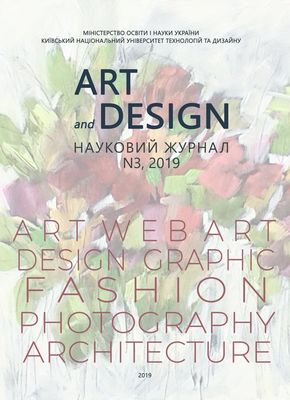THEORETICAL UNDERSTANDING OF THE BASIC APPROACHES TO COSTUME DESIGN AS A MEANS OF FORMING A TOURIST ATTRACTION AND THE IMAGE OF THE REGION
DOI:
https://doi.org/10.30857/2617-0272.2019.3.3Keywords:
costume design, recreation, tourism, attraction, costume perception, artistic design of clothingAbstract
The aim of the research is to systematize the theoretical material and determine the basic approaches to costume design as a means of increasing the attractiveness of recreational and tourist activities and forming the tourist image of the region. Methodology. The research methodology is based on a critical analysis of publications on the selected topic, the generalization and systematization of the collected factual material, the application of the method of conducting a sociological survey and statistical processing of the collected answers of respondents. Results. As a result of the research of costume design in the context of the development of recreational and tourist activities, their structural and logical sequence was built, which consists of the main 3-4 stages. At each stage, the fundamental mechanisms of using the costume to achieve their objectives and improve the quality of the costume are substantiated. In general, in the design of the costume as a means of creating a tourist attraction and the image of the region, the following areas have been identified, namely: costume design for photo and video advertising, costume design for promotions, costume design of residents of a given territory in the context of creating its image, costume design representatives of the service sector , design of a costume for special purposes for outdoor activities, as well as costume design for participants in cultural, educational and entertainment events. Scientific novelty. The scientific novelty of the work lies in the fact that for the first time the peculiarities of basic approaches to costume design as a means of forming the tourist attraction and image of the region have been revealed. Practical significance. The obtained results determine the possibility of a deeper understanding of the role of costume in modern recreational and tourist activities, and can also be used in the training of designers in teaching disciplines related to costume design and in the practical activities of designers, costume designers, managers of tourism, etc.

